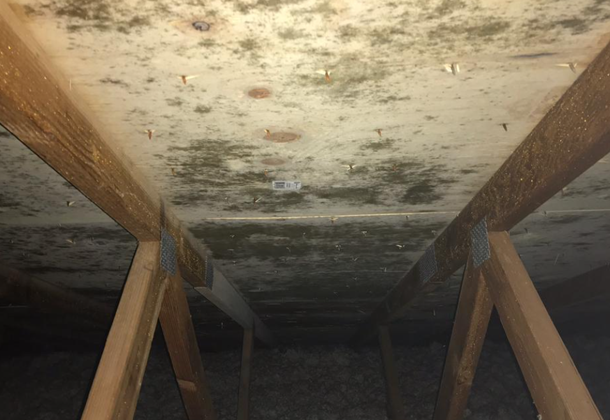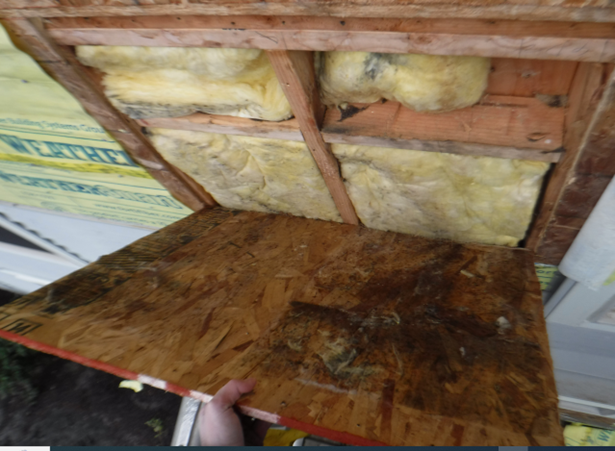How to properly ventilate your home to keep moisture out
It’s that time of year when we are springing forward, the birds are chirping, the trees are budding, and the algae is in bloom (hopefully just on the outside of our houses). Windows have been closed tight all winter to keep the cold air out and to save energy since that’s the responsible thing to do, right?
Maybe, or maybe not. We all know what happens when you get in a car with a wet raincoat and the windows are rolled up with no defroster on: the windows fog up. The same thing can happen within the walls or in the attic of your house if the windows are closed. It’s one thing for a house to have a good “raincoat” to keep the water out, but it’s another thing to limit “sweating” (also known as condensation).
Normally, things in nature want to reach equilibrium. This is true in a house where the inside temperature and humidity want to equalize with the outside temperature and humidity (or lack thereof). In the wintertime in the northwest, that means heat and moisture move from inside of the house to the outside of the house through the walls and ceiling. If there is too much moisture movement for too long without drying, sweating can happen somewhere in the wall or attic. Sweating can cause some bad stuff to happen.
Bad Stuff in an Attic:

Bad Stuff in a Wall:

Attic moisture problems are often blamed on improper intake and exhaust ventilation in the roof. While it’s true that poor roof ventilation does not allow drying, the lack of ventilation is not the source of the moisture. Back to the car example: what caused the windows to fog up – the wet raincoat, or the fact that the windows were up? If the windows were rolled down a bit, it would have mitigated the wet raincoat, but it was the wet raincoat that caused the windows to fog up in the first place.
The same can be true for an attic or wall: good ventilation can mitigate moisture, but the source of the moisture (assuming things are good with your building envelope) is likely coming from inside the house due to cooking, bathing, plants, people breathing, and other normal behavior.
Proper Ventilation
So, how do we reduce interior moisture at the source before it enters our walls and attics? Other than abstaining from showering and breathing, we can reduce the moisture within our house by letting out humid and stale air and letting in fresh outside air.
There are two ways to let in fresh air and let out stale air. And actually, building codes require this to be accomplished by one of two ways: 1) Mechanical Ventilation, or 2) Natural Ventilation. Chances are, most of us live in homes relying on Natural Ventilation and not Mechanical Ventilation.
- Mechanical Ventilation refers to a system, designed by a mechanical engineer, that purposefully brings outside air into the house, and takes inside air out of the house by mechanical means (fans). The design requires a detailed analysis, calculations, calibration, etc. It’s complicated.
- Natural Ventilation requires operable windows. Huh? Yeah, it means that letting fresh air into the house and stale air out of the house relies on the building occupants opening the windows. In the winter. When it’s cold. That’s when there is the highest risk for “sweating” to occur if the windows aren’t opened. Natural ventilation also requires spot ventilation (fans) in bathrooms and kitchens, but this is supplemental and not to be confused with a designed mechanical ventilation system.
Moisture in walls and attics accumulates, to some degree, all winter long and has potential to cause issues when the temperatures get warm enough for bad stuff to start happening. If your windows have been closed all winter, it’s too late to stop the build-up that may have occurred, but it might not be too late to help things dry out.
Next winter, try opening your windows! Especially when showering, cooking, sleeping, etc., even if it means feeling a little draft and wasting a little energy. This will help give you fresh air, keep the bad stuff from happening, and you will be code compliant in the process.